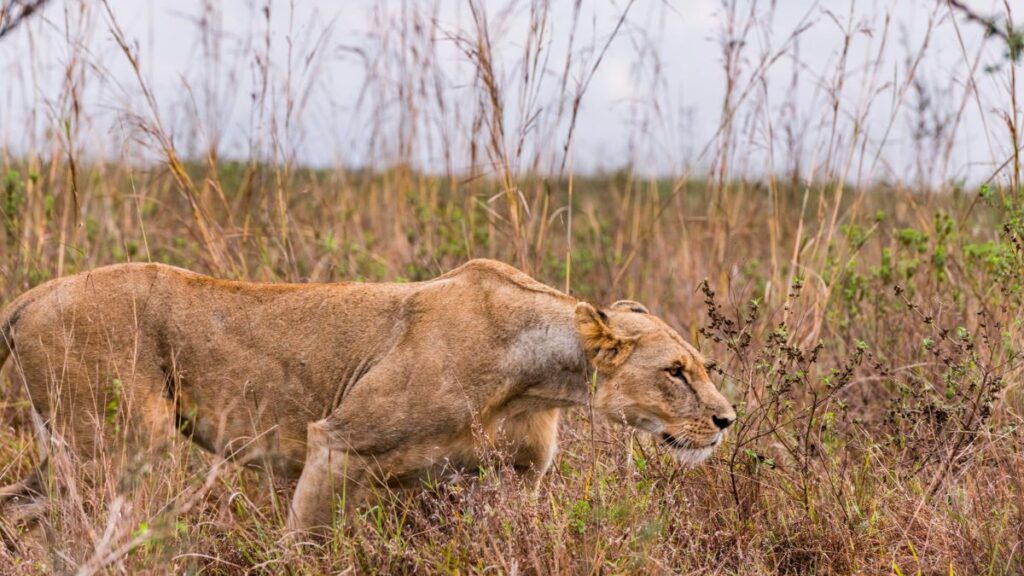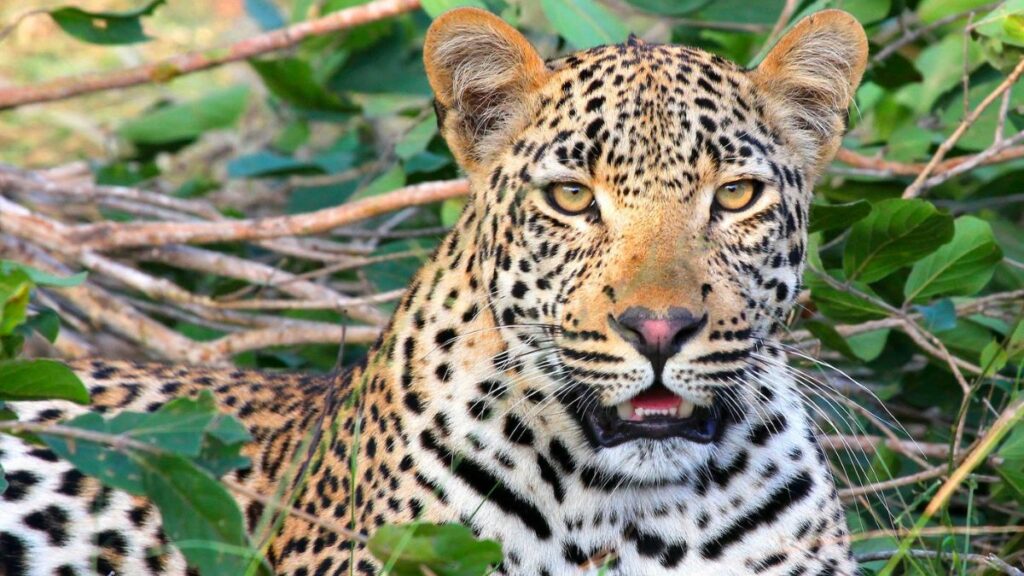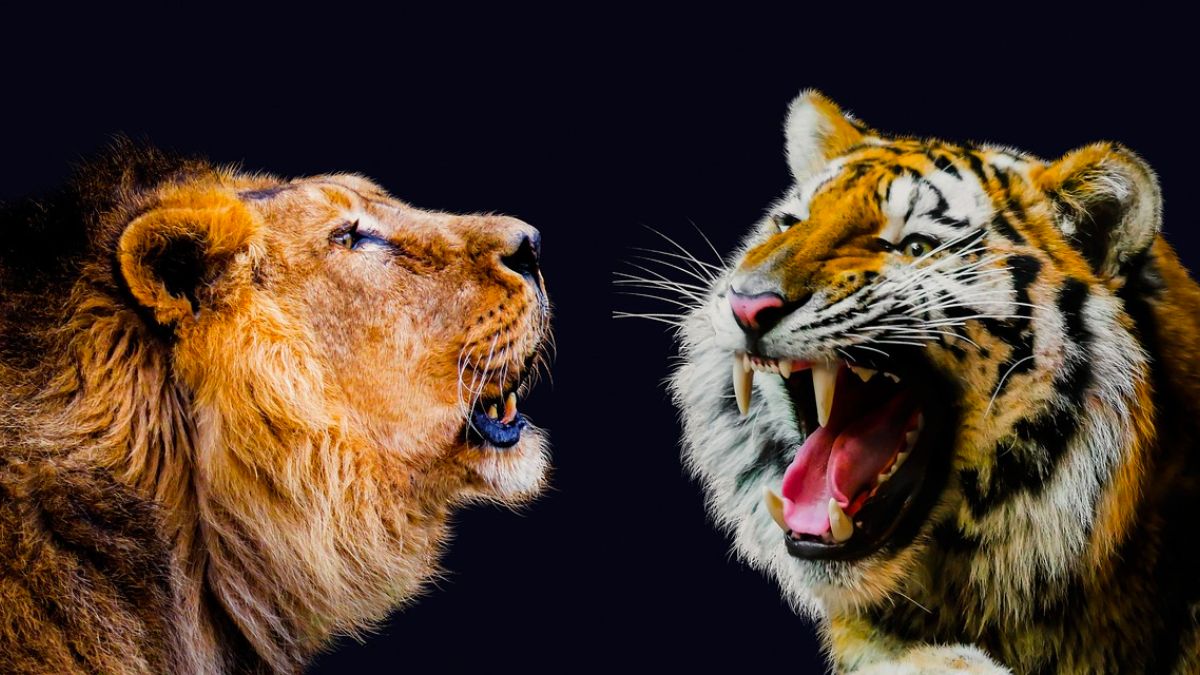Tigers vs lions
Tigers vs lions can be considered to be two of the most ferocious predators in the world. This is mainly due to their incredibly strong jaws, as well as their ability to bite hard. Their ability to attack other creatures can also be a factor. There are many factors that should be taken into consideration before deciding whether or not a tiger or lion will be right for you. These factors include the size of the animal, its diet, and its genetics.
Genetics
The tiger and the lion are among the world’s most endangered big cats. To further understand their evolution, scientists conducted a study on the DNA of these two iconic predators. Results were published in Nature Communications and will provide valuable information for conservation and breeding efforts.
Despite their similarities, tigers and lions have distinct genetic growth mechanisms. These include chromosome rearrangements that result in a partial reproductive barrier. This phenomenon is known as imprinting.
Genetic variations have been thought to be a major factor in species diversification. Because of this, researchers are working to conserve big cats in the wild. Scientists are also exploring the relationships between tigers and lions.
The tiger and the lion were originally split from a common ancestor about 3.2 million years ago. Today, they are sister species. Their genomes are similar, with 95 percent of their DNA derived from domestic cats.
It appears that tigers and lions are closely related. International researchers have mapped the genomes of these big cats. They showed that the tiger is closer to leopards and jaguars than to domestic cats.
Interestingly, tigers and lions interbreed in captivity. This phenomenon is not normally found in nature.
However, scientists have not mapped the entire genome of tiger/lion hybrids. This will help determine their genetic origins and potential for captive breeding. A map will also provide information on how tigers and lions have evolved.
There are five big cats with complete genomes. Researchers have used these genomes to better understand their relationships and adaptations to different environments.
The biggest of the group is the liger. This is a hybrid between a male lion and a female tiger. Ligers have a much larger body size than tigons, and can be as large as a human being. But their offspring can suffer from birth defects, growth dysplasia and obesity.
Size comparison
There are many differences between tigers and lions, however the two animals are very similar in their size. Tigers are known as apex predators and live at the top of the food chain. They are ferocious and fierce creatures.
Lions are one of the five largest cat species in the world. They are found in Africa and Asia and are known for their savagery. However, they are also social and love to hunt. Usually, they live in prides and coalitions.
The lion is considered to be the king of the jungle. Tigers, on the other hand, are more aggressive and active. While tigers usually live in solitude, lions prefer to live in coalitions.
Lions can be found in Southeast Asia and Africa. Their habitats include dense jungles, forests, and grasslands. Normally, a lion will live between 12 and 16 years in the wild.
Tigers are the biggest of all the big cats. This is partly due to their longer bodies, larger brains, and strong bite force. In addition, tigers are faster and more agile. Despite their large size, tigers rarely exceed 570 pounds.
Tigers are more aggressive and have a greater bite force than lions. They also have larger canines. It has been estimated that a tiger’s bite can be as much as 10.5 times the force of a lion’s.
The tiger is much larger than the lion, and is the most powerful wild cat. These cats are able to reach speeds of 50 miles per hour.
In the wild, a tiger will typically grow to about eight to twelve feet. Although some tigers can attain lengths of more than four meters, most have body lengths of around three and a half meters.
Bite force
The bite force of tigers and lions is not very comparable. Tigers, however, have a much larger body and bigger canines than lions. Despite these differences, it is still true that tigers have the strongest bite of all the big cats.
Lions have canines that are 3.2 inches long, while tigers have canines that are 3.6 inches long. These teeth are perfect for crushing smaller bones. In addition, tigers have the longest canines of any cat.
However, lions and tigers are not the only animals with large canines. Snails, for example, have the largest teeth in the animal kingdom.
When it comes to calculating bite force, scientists have used direct measurement and computer software modeling. There are some limitations to both methods. It can be difficult to get accurate results the first time. Some researchers use crane scales or force transducers to measure bite force. Others take a more indirect approach.
Lions have a 650 pound per square inch (PSI) bite, while tigers have 1050 PSI. Similarly, jaguars have a 1,500 psi bite.
Lions use canines, claws, and a sagittal crest on top of their skulls. Their jaws are also heavy, giving them a powerful bite. However, this doesn’t mean that they have the strongest bite of any animal.
Researchers have measured the bite force of tigers and lions using the same techniques. But determining the lion’s real bite force is a complicated undertaking. Many factors, including age, size, and the size of the prey, influence their strength.
Lions have a higher bite force than tigers, but it isn’t as impressive as some other big cat species. While a tiger may be able to crush a bowling ball, a lion isn’t as strong.
Breeding strategy
The breeding strategy for tigers and lions is not simple. There are many factors that go into the decision. These include genetic diversity, the number of lions available for interbreeding, and the total space of a facility has to manage lions.
Breeding strategies for tigers and lions are a result of a mix of natural and man-made factors. Lions and tigers have different lifestyles and natural habitats. Therefore, they do not naturally mate with each other. However, they have interbred in captivity. This has resulted in several zoo attractions.
The breeding strategy for tigers and ligers involves the mingling of the sperm of a male tiger with the egg of a female lioness. This results in a hybrid animal known as a tigon.
Although tigons are short-lived, they have an abundance of growth-limiting genes. In addition, tigons weigh about 350 pounds. They have a coat with thicker black stripes, which minimize the white color on their coat.
A male tiger is unlikely to breed before the age of four or five, when he is sexually mature. He is not pressured by breeders to produce large offspring. His sperm has imprinted growth genes, which are used to maximize the growth of his offspring.
Female tigers do not have these genetic adaptations. Instead, their genes are adapted to dampen the effects of the male tiger’s genes. That means that tigresses do not inhibit the growth of their offspring.
Both tigers and lions are mainly solitary animals. Their reproductive patterns vary from species to species. Tigers and lions are both native to Asia and Africa. Until recently, lions were widely distributed throughout Europe and North America.
Diet
If you are planning to keep tigers or lions, you should know their diet. Tigers are obligate carnivores and can eat a wide variety of animals. However, they cannot survive on plant-based diets. They have to consume meat, including pigs, buffalo and deer. Their diet is mainly dependent on the nutrients found in the animal’s body.
The diet of tigers is usually based on meat. In fact, they can eat as much as 50 kg of meat in one sitting. Depending on the size of the prey and their location, the diet of a wild tiger may vary.
While the tiger’s diet in the wild is largely dependent on its environment, the diet of tigers in captivity is quite different. In captivity, tigers eat kangaroo, goat, rabbit, chicken, and beef. A tiger in a zoo can eat up to fifteen kilograms of meat in a day.
Tigers can also eat other predators, such as foxes. The wild tiger will go for weeks without food, and when it does, it will gorge on up to 100 pounds of meat.
Similarly, lions must eat other animals in order to survive. They hunt by stalking the rear of the prey. This method is similar to that of a boxer. When the lion reaches the back of the prey, it will sink its teeth into the neck of the prey. It will then drag the prey into the bushes and eat the carcass.
Tigers and lions are both apex predators. Both species are large, and they can leap up to 33 feet. To be successful in their hunting, tigers have to be able to see their prey.
Tigers Vs Lions Food
Tigers are known as predatory carnivores, with longer fangs, and their primary food is their own cubs. However, they will also take the kills of other tigers or leopards.
Tigers eat their own cubs

Tigers are apex predators. They eat a wide variety of animals, including snakes, eagles, crocodiles, pythons, and other mammals. Among other things, they are known for their strength and speed.
In the wild, tigers live in packs. There are typically three to four members of a group, called a ‘streak.’ Occasionally, there can be up to ten individuals. A streak is also referred to as an ambush.
The group usually consists of one or more female tigers and their cubs. It is important to understand the role of the mother tiger in caring for her offspring. She is responsible for providing her cubs with food, shelter, and protection.
The tiger’s natural instinct to protect her cubs is a strong one. However, if she feels that the cub is not strong enough, she may kill it to survive. This is a common behavior among animals.
Another reason tigers kill their own cubs is if they are unable to provide them with a healthy diet. The weakest cubs will eventually die of starvation.
Nevertheless, tigers are apex predators and their own offspring are a vital resource. Hence, they should be given the best of care. To keep your tiger healthy, it is important to ensure that its environment is stimulating. Providing your tiger with fresh water and fresh food will help it grow.
During the first six weeks of a tiger’s life, he or she is dependent on the mother’s milk. When the baby is about six months old, it starts eating meat. By the time he or she is eight to 10 months old, he or she can start hunting.
When a tiger cub grows to be two pounds, it is considered to be a baby tiger. As a result, it needs to be watched very closely. During this time, it learns to hunt by imitating the movements of its mother.
One way to encourage a tiger cub to eat more is to feed it with different types of prey. Alternatively, you can freeze the meat so it is more convenient to consume.
Although tigers do not usually kill their own cubs, they do eat the offspring of other tigers. Oftentimes, the tiger father will not take care of his cubs when he leaves the territory of his mother.
They commandeer kills from other tigers or leopards
If you’re wondering whether tigers and lions are the same or different, you’ve come to the right place. Tigers are the largest carnivores, but they’re also the most fierce. They’re known for tearing apart large animals like elephants and buffalo. Leopards are smaller and are socially subordinate to tigers.

In many cultures, tigers are viewed as the divine guardians of the jungle. This has led to some people referring to them as “the king of the jungle”. A tiger has been known to kill a water buffalo, and he has even been known to attack cattle. Nevertheless, the tiger is still regarded as a symbol of royalty and divine retribution in India.
Similarly, in the Sunda Islands, tigers are a symbol of divine retribution. Lions are even bigger menaces. Their appetites are often driven by human greed, and they have attacked and killed cattle and pigs.
As with any saber-toothed cat, tigers and leopards can be deadly. Some tigers can even thrive on domestic livestock. But a healthy large mammal is usually avoided.
The tiger and leopard are both good at the one-two punch. However, the tiger has the upper hand. There’s a reason that the tiger is the best-known of all big cats. And it’s not just because he’s the heaviest.
Tigers and leopards are both important to the ecosystem. While the tiger is a dominant predator, he can only take so much of the load. That’s why conservationists are keen on keeping tigers in a buffer zone. It’s estimated that 250 tigers are killed every year by humans. So if you want to see tigers in their natural habitat, you’ll have to travel to a tiger reserve or sanctuary.
On the other hand, leopards aren’t as aggressive. If a leopard isn’t in the mood to fight a tiger, he’ll likely run away. Nonetheless, if you happen to be in a tiger reserve, you may get to see two of the biggest predators in the world go at it head-to-head.
Of course, if you’re in a tiger reserve, you’re probably not going to see a man-eating tiger. Luckily, there aren’t many of these guys in the wild.
They have longer fangs
Tigers and Lions are two of the most formidable animals on the planet. Their fangs and throttling bites are used to clamp around the throat of large prey, destroying their windpipe.
The lion is an apex predator, which means that there are no other predators in its natural habitat. These big cats live at the top of the food chain, leading their prides. In addition, they are very sociable creatures. They also like to swim and enjoy spending time with their friends.
Both tigers and lions have long canines that are used for catching their prey. Their upper canines are longer than their lower canines, which help them hold their prey. A fully grown tiger has four canines that can be up to 3.5 inches long.
These canines are called cuspids, which is the strongest teeth in the mouth. They are strong enough to shear chunks of meat for swallowing.
While tiger’s canines are much longer, they are not as long as the fangs of lions. This is because the smaller prey led to a decrease in fang size.
Although tigers and lions have similar diets, their jaws are designed for different purposes. During hunting, tigers use a strong bite force of up to 1000 PSI. It is estimated that they consume up to 40 kg of meat in one sitting.
Unlike the tiger’s carnassials, lions do not have a sagittal crest on their skull. This is because their lower jaw does not move to the side. Instead, it is positioned up and down. However, tigers have muscles attached to the sagittal crest.
These muscles help the tiger to bite harder and more efficiently. Lions’ canines are also shorter than the canines of tigers. But their bite force is higher.
Despite their long canines, tigers have a relatively small number of molars. The molars are located in the upper jaw. Other than molars, tigers have six incisors, which are small nibblers.
Because of their strong teeth and sagittal crest, tigers are capable of capturing prey. They can also puncture the jugular vein to deliver a deadly bite.
Although the lion is the alpha male, tigers are the dominant cats. Many polls have shown that people prefer tigers over lions.
They are predatory carnivores
Carnivores are carnivores, meaning they eat other animals. They also include birds and reptiles. But their main diet is meat. Tigers and lions are two of the largest predatory carnivores.
While many carnivores are solitary, some live in bands or in pairs. These groups often have territorial behavior, which involves visual displays and scent marking. In some species, they even have colonies.
These group-based behaviors evolved independently in different species. Some carnivores have obligate feeding strategies, which means they eat only animal products. Others are mesocarnivores, which eat about 30 to 70 percent meat. Hypocarnivores, however, eat less than 30% meat.
Most species have at least six to eight premolars and two canines on each jaw. Their teeth have sharp cusps and are adapted to nipping flesh. For some species, all their cheek teeth are shaped the same way.
These big cats are active at dawn and dusk. At these times they are known to consume 40 to 50 deer-sized animals per year. A male tiger’s bite force is a thousand PSI.
Tigers and lions scavenge kills from other predators. They are particularly prone to scavenging leopards and cheetahs. However, these two big cats also eat large mammals. Lions hunt buffalo, African buffalo, and wildebeest, as well as giraffe.
Tigers and lions are among the five largest cats. Other big cats are the snow leopard and jaguar. Many tigers have a sagittal crest on top of their skull. This helps them protect against neck bites.
Male lions are aggressive and territorial. They kill female cubs if they are offspring of other males. The size of the territory varies with the distribution of the resources within it. The resource dispersion hypothesis suggests that a larger territory is related to the spatial pattern of the resources available.
In some countries, the rabies virus is transmitted by a bite. Several countries use a technique called capture-vaccinate-release to reduce the vulnerability of individual animals. Another approach is to drop vaccine-laden baits.
There are a number of infectious diseases carried by carnivores, including parvovirus and toxoplasmosis. Humans are concerned about the risk of depredation by these animals.









